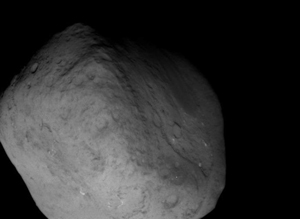Not lost in space
By Asher Klein, ’11
Image courtesy NASA/JPL-Caltech/Cornell

Until February, no comet had ever been examined twice by humans. That changed when NASA spacecraft Stardust, carrying a University of Chicago–made dust-monitoring device, passed within 112 miles of comet Tempel-1, which was first investigated in 2005. Having finished its primary mission photographing and sampling the tail of another comet in 2004, Stardust was set on course to meet Tempel-1, which circles the sun every 5.5 years. At right is an image the spacecraft took of the comet on February 14, 2011.
The U of C instrument on the probe, a dust-flux monitor, measures the amount of material a comet emits by detecting particles that hit a membrane, which produces electricity in response to stress. The particles pierce the membrane, which creates an electric signal, says Fermi Institute senior scientist Thanasis Economou. “By collecting the amount of charge that this produces in this hole, we can determine the mass of the dust particle, and by counting all the heat, we know the flux.”
Stardust’s pass of Tempel-1 should reveal more about the comet’s origins and how it changes after circling the sun. “What is interesting is that this material does not come uniformly from the comet; it comes only from some specific places in the comet—jets coming from some places. We will be able to determine where they come from.”
Return to top
